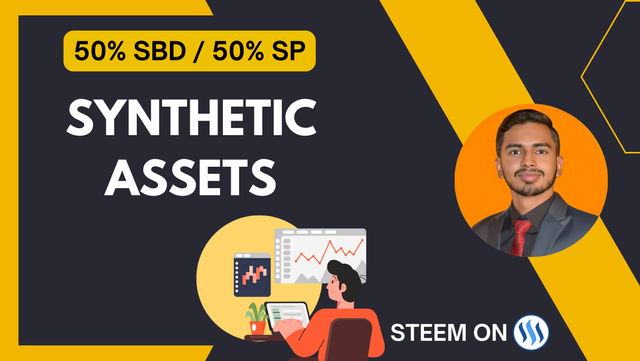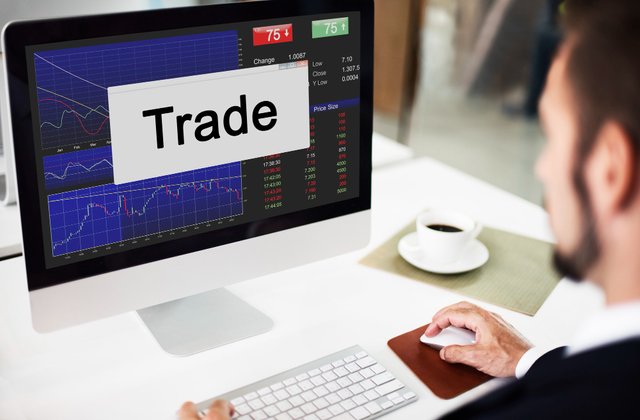Synthetic Assets in Crypto

Introduction
Synthetics are just digital assets that stand in for real physical assets. These can be regarded as synthetic versions of a commodity, a share, a bond, a currency, or any other financial instrument. Their focus is on allowing investors to benefit from price movements in such assets without ever needing to own them. All of the synthetic assets are based on DeFi protocols and blockchain. Here we will discuss difference between synthetics and real assets and what are the trading advantages of trading in synthetic assets. Let’s start then!
Difference Between Synthetic Assets And Traditional Assets
Now you must be wondering what is the real difference between synthetic assets and traditional assets. First, synthetic assets are blockchain-native since synthetic assets are digital entities based on the blockchain whereas traditional assets are mostly physical or documented legally.
Consider when you buy a share in a specific company, that share is registered in your name, and you are termed a shareholder of that company. If you own anything it is presumably in your name - like for example the legal documents for your home. It implements that for traditional assets, the ownership and transfer is usually executed via regulatory structures.
Another difference is that Synthetic assets are traded on decentralized platforms, thus they have no central authority to govern them. Traditional assets are traded on centralized platforms in which central authorities control essentially everything (e.g. stock exchanges or banks etc).
Moreover, synthetic assets allow you to optimize your investments through leverage and hedging. Meaning, you can take more exposure with less dollars and effectively manage your risks. It is true that some traditional assets also have leverage and hedging properties (to an extent), but they are very limited and controlled.
Examples of Synthetic Assets Platforms in the Crypto Space
There are plenty of interesting and innovative examples of synthetic assets in the crypto space. Below here are three such examples:
Synthetix: Synthetix is a permissionless decentralized platform on Ethereum for the creation of synthetic assets (Synths): on-chain tokens that track the value of assets in the real-world. Synths - synthetic assets, traded on synthetix could mirror any "real" asset, for example, fiat cash (USD, Euro), resources (gold, silver) and digital currencies (Bitcoin, Ethereum). Synths trade on the Synthetix protocol, and their price is pegged to the price of the underlying commodity, which means users can make trades or redeem their Synths whenever they like.
Mirror Protocol: It is another example that operates on the Terra Blockchain. This protocol creates synthetic assets called "Mirrored Assets" or "mAssets". These mAssets can represent any traditional financial commodity, such as stocks (Apple, Tesla), assets, or ETFs. The main goal of the mirror protocol is to allow users to achieve universal, seamless exposure to any asset.
dYdX: dYdX is a DeFi exchange specialized in offering derivative trades. It is a platform where users can trade synthetic assets and perpetual contracts. With synthetic assets, dYdX lets users to profit out of the price moves of these assets while not holding them in reality. Plus, this platform has a degree of trading flexibility, and offers leverage options.
Benefits of Trading in Synthetic Assets
Trading synthetic assets is very profitable because synthetic assets are traded 24/7 on decentralized platforms.
Traditional assets are often traded in large chunks, such as shares or properties. In synthetic assets you can get fractional ownership, meaning you can buy even smaller units. This increases investment opportunities for retail investors.
Using leverage in synthetic assets is fairly easy. You can get more exposure with less capital. Also, you can hedge your portfolio with synthetic assets. If you think the market is going down, you can take a short position and cut your losses.
Fees for trading synthetic assets are generally lower than for conventional assets. On decentralized platforms, you don't need a broker or intermediary, which reduces the overall cost of trading.
Settlements in case of traditional assets may take a long time, but settlement of synthetic assets is instant. It streamlines the trading process and improves liquidity.
Conclusion
A synthetic asset is simply put a blockchain-based digital representation of a real-world asset. They are transforming the financial sector by providing dynamic trading opportunities that are accessible and decentralized. Since they allow for fractional ownership, global market access, and immediate settlement; so anyone can own and invest in Synthetics with any capital amount they want. Also, via the help of balanced regulatory frameworks and cross border collaboration, their acceptance would be on another level.



Hello @waqarahmadshah,
Your post have been detected to be AI generated and I advise that you desist from this act or you will be banned from our community
TEAM 5
Thank you @soulfuldreamer. I really appreciate that. 😊